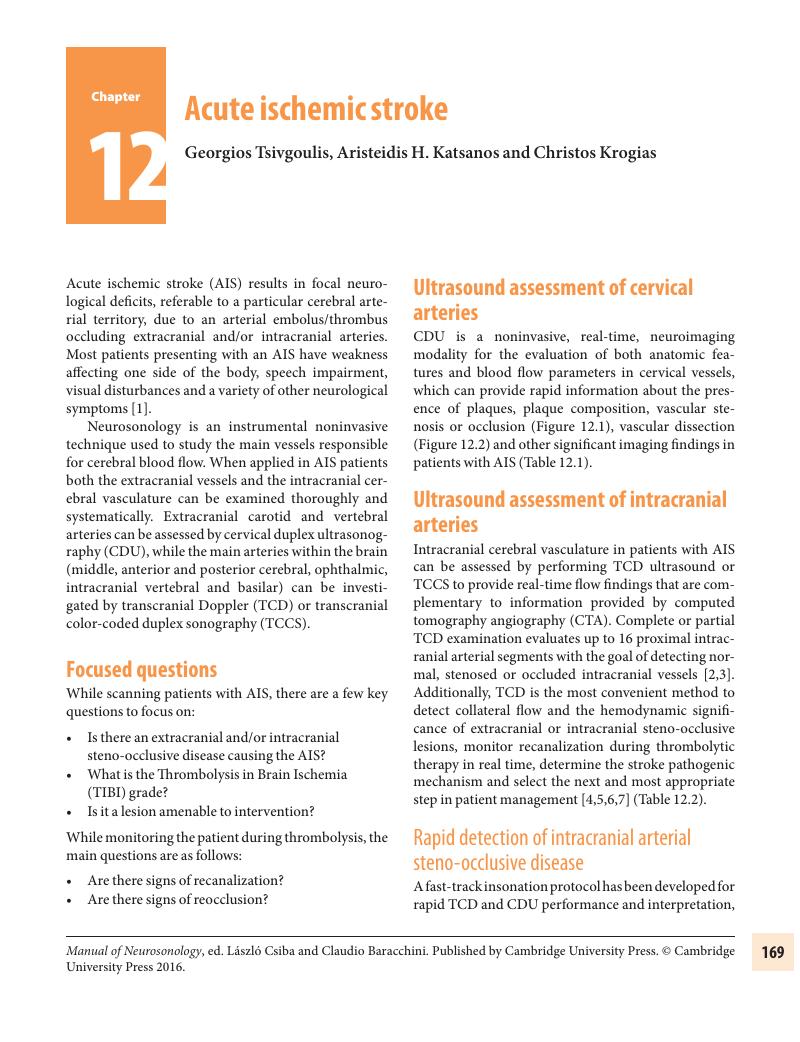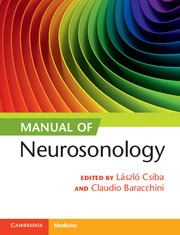Book contents
- Manual of Neurosonology
- Manual of Neurosonology
- Copyright page
- Contents
- Contributors
- Foreword
- 1 Ultrasound principles
- 2 Cervical arterial insonation
- 3 Carotid wall imaging
- 4 Endothelial function testing
- 5 Atherosclerotic carotid disease
- 6 Atherosclerotic vertebral artery disease
- 7 Cervical artery dissection
- 8 Cervical artery vasculitides
- 9 Transcranial insonation
- 10 Intracranial stenosis/occlusion
- 11 Extracranial and intracranial collateral pathways
- 12 Acute ischemic stroke
- 13 Intracranial perfusion imaging
- 14 Sonothrombolysis
- 15 Microembolic signal detection
- 16 Right-to-left shunt detection
- 17 Cerebral autoregulation
- 18 Vasomotor reactivity
- 19 Functional transcranial ultrasound
- 20 Neuromonitoring using transcranial Doppler under critical care conditions
- 21 Cerebral circulatory arrest
- 22 Intracranial venous ultrasound
- 23 Cervical venous ultrasound
- 24 Brain parenchyma imaging
- 25 Neuro-orbital ultrasound
- 26 Ultrasound of the nerves
- Index
- References
12 - Acute ischemic stroke
Published online by Cambridge University Press: 05 May 2016
- Manual of Neurosonology
- Manual of Neurosonology
- Copyright page
- Contents
- Contributors
- Foreword
- 1 Ultrasound principles
- 2 Cervical arterial insonation
- 3 Carotid wall imaging
- 4 Endothelial function testing
- 5 Atherosclerotic carotid disease
- 6 Atherosclerotic vertebral artery disease
- 7 Cervical artery dissection
- 8 Cervical artery vasculitides
- 9 Transcranial insonation
- 10 Intracranial stenosis/occlusion
- 11 Extracranial and intracranial collateral pathways
- 12 Acute ischemic stroke
- 13 Intracranial perfusion imaging
- 14 Sonothrombolysis
- 15 Microembolic signal detection
- 16 Right-to-left shunt detection
- 17 Cerebral autoregulation
- 18 Vasomotor reactivity
- 19 Functional transcranial ultrasound
- 20 Neuromonitoring using transcranial Doppler under critical care conditions
- 21 Cerebral circulatory arrest
- 22 Intracranial venous ultrasound
- 23 Cervical venous ultrasound
- 24 Brain parenchyma imaging
- 25 Neuro-orbital ultrasound
- 26 Ultrasound of the nerves
- Index
- References
Summary

- Type
- Chapter
- Information
- Manual of Neurosonology , pp. 169 - 179Publisher: Cambridge University PressPrint publication year: 2016
References
- 2
- Cited by



